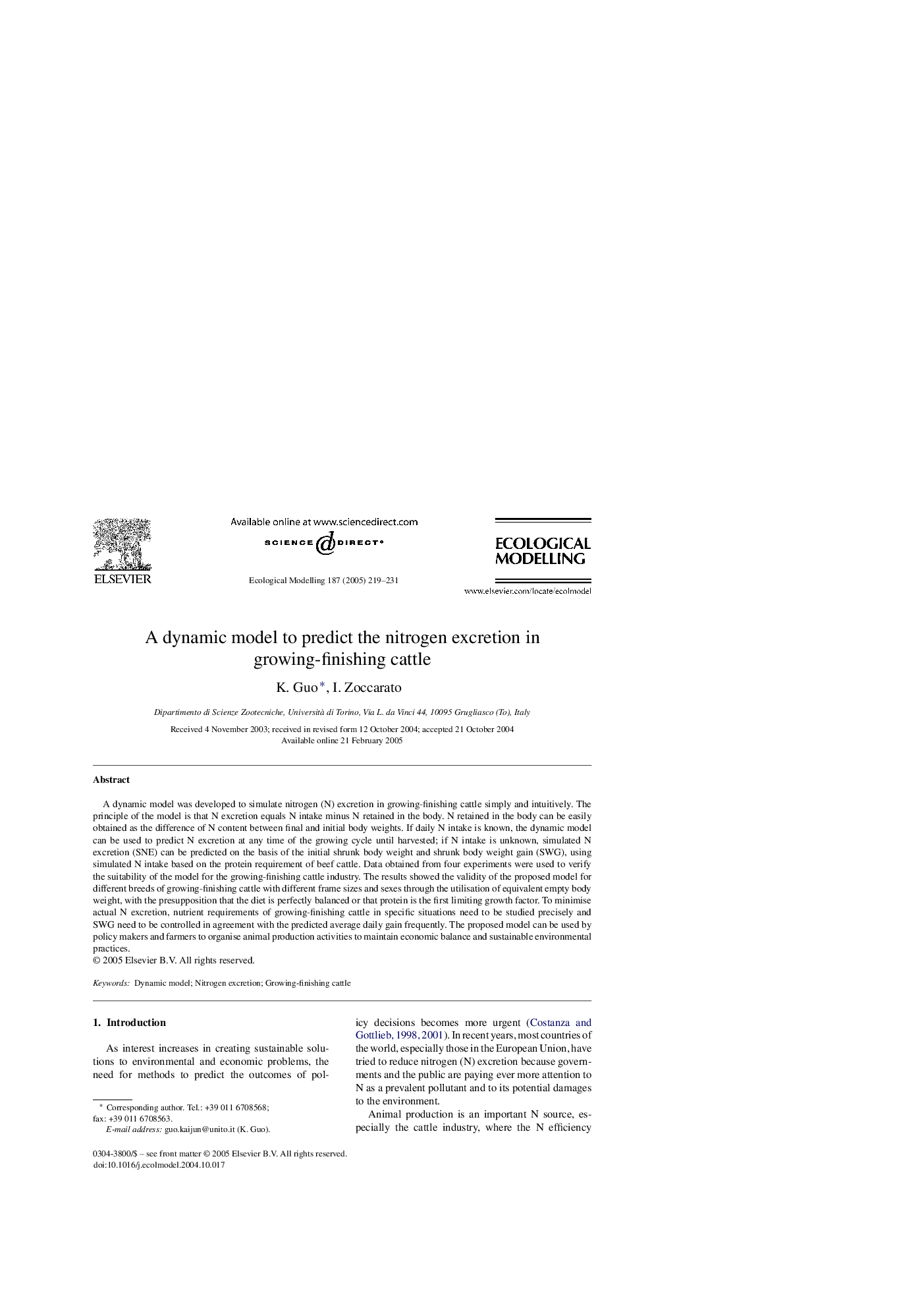| کد مقاله | کد نشریه | سال انتشار | مقاله انگلیسی | نسخه تمام متن |
|---|---|---|---|---|
| 9443346 | 1617576 | 2005 | 13 صفحه PDF | دانلود رایگان |
عنوان انگلیسی مقاله ISI
A dynamic model to predict the nitrogen excretion in growing-finishing cattle
دانلود مقاله + سفارش ترجمه
دانلود مقاله ISI انگلیسی
رایگان برای ایرانیان
موضوعات مرتبط
علوم زیستی و بیوفناوری
علوم کشاورزی و بیولوژیک
بوم شناسی، تکامل، رفتار و سامانه شناسی
پیش نمایش صفحه اول مقاله

چکیده انگلیسی
A dynamic model was developed to simulate nitrogen (N) excretion in growing-finishing cattle simply and intuitively. The principle of the model is that N excretion equals N intake minus N retained in the body. N retained in the body can be easily obtained as the difference of N content between final and initial body weights. If daily N intake is known, the dynamic model can be used to predict N excretion at any time of the growing cycle until harvested; if N intake is unknown, simulated N excretion (SNE) can be predicted on the basis of the initial shrunk body weight and shrunk body weight gain (SWG), using simulated N intake based on the protein requirement of beef cattle. Data obtained from four experiments were used to verify the suitability of the model for the growing-finishing cattle industry. The results showed the validity of the proposed model for different breeds of growing-finishing cattle with different frame sizes and sexes through the utilisation of equivalent empty body weight, with the presupposition that the diet is perfectly balanced or that protein is the first limiting growth factor. To minimise actual N excretion, nutrient requirements of growing-finishing cattle in specific situations need to be studied precisely and SWG need to be controlled in agreement with the predicted average daily gain frequently. The proposed model can be used by policy makers and farmers to organise animal production activities to maintain economic balance and sustainable environmental practices.
ناشر
Database: Elsevier - ScienceDirect (ساینس دایرکت)
Journal: Ecological Modelling - Volume 187, Issues 2â3, 25 September 2005, Pages 219-231
Journal: Ecological Modelling - Volume 187, Issues 2â3, 25 September 2005, Pages 219-231
نویسندگان
K. Guo, I. Zoccarato,